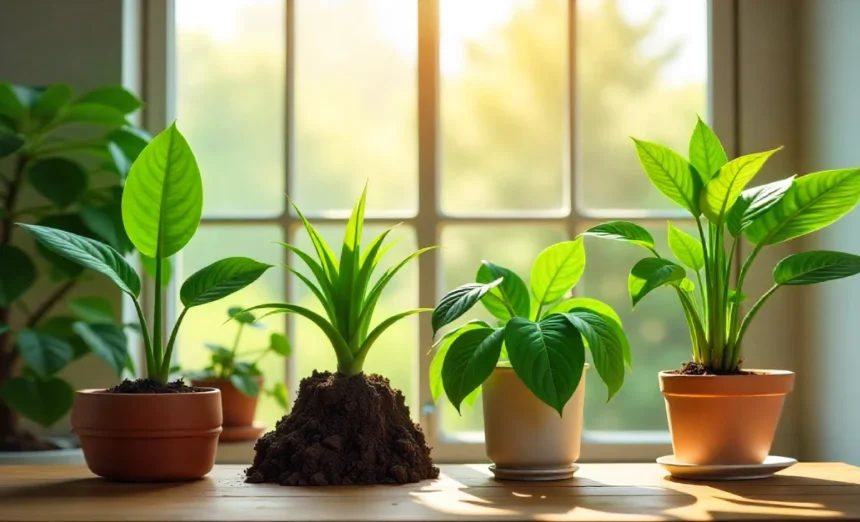If you’ve noticed your beloved indoor plants developing yellow leaves, you’re not alone. This frustrating problem affects millions of Australian plant parents, leaving them wondering what they’re doing wrong. Understanding indoor causes of yellow leaves is the first step to restoring your green friends to health.
- Understanding Why Indoor Plant Leaves Turn Yellow
- Top 7 Indoor Plants Yellow Leaves Causes
- 1. Overwatering and Root Rot Issues
- 2. Underwatering and Drought Stress
- 3. Inadequate Lighting Conditions
- 4. Nutrient Deficiencies and Feeding Problems
- 5. Temperature Fluctuations and Environmental Stress
- 6. Pest Infestations and Plant Health Issues
- 7. Natural Ageing and Seasonal Changes
- Prevention Strategies for Healthy Indoor Plants
- Establishing Proper Care Routines
- Creating Optimal Growing Environments
- Choosing the Right Plants for Australian Conditions
- When to Seek Professional Help
- Quick Reference Guide: Diagnosing Indoor Plants Yellow Leaves Causes
- Conclusion
The good news? Most indoor plants’ yellow leaves are easily fixable issues once you know what to look for. Whether you’re a beginner plant owner in Sydney or an experienced gardener in Melbourne, identifying these common culprits will help you restore your plants to their former glory.
In this comprehensive guide, we’ll explore the seven most common indoor plants yellow leaves causes and provide simple, actionable solutions you can implement today to save your struggling plants.
Understanding Why Indoor Plant Leaves Turn Yellow
Yellow leaves, or chlorosis, occur when plants can’t produce enough chlorophyll—the green pigment essential for photosynthesis. This natural process helps plants convert sunlight into energy, so when it’s disrupted, leaves begin to fade from their healthy green colour.
Plant stress triggers this yellowing response. Your indoor plants communicate through their foliage, and yellow leaves are their way of saying something isn’t quite right in their environment. The key is identifying which specific stressor is causing the problem.
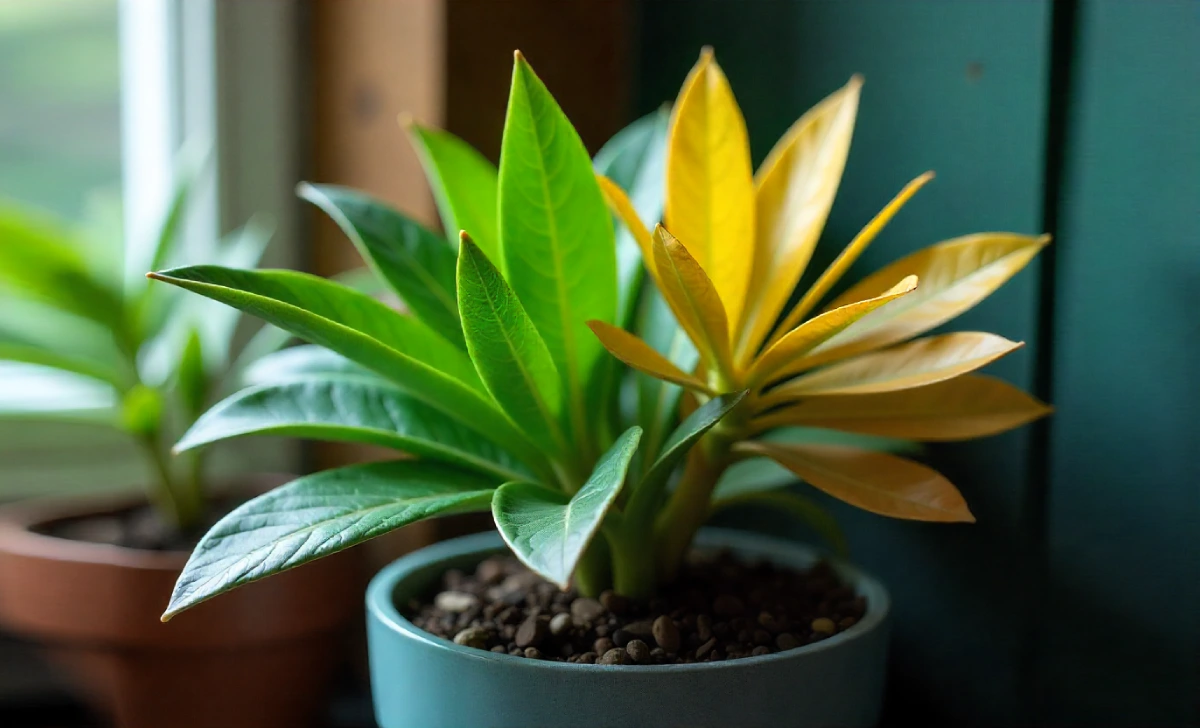
Top 7 Indoor Plants Yellow Leaves Causes
1. Overwatering and Root Rot Issues
The Problem: Overwatering remains the leading cause among indoor plants yellow leaves in indoor plants across Australia. When soil stays consistently wet, plant roots can’t access oxygen, leading to root rot and subsequent leaf yellowing.
How to Identify: Yellow leaves typically start from the bottom of the plant and work upward. The soil feels soggy, and you might notice a musty smell. Leaves may also feel soft or mushy to the touch.
The Simple Fix:
- Stop watering immediately and allow the soil to dry out completely
- Check roots by gently removing the plant from its pot
- Trim away any black, mushy roots with clean scissors
- Repot in fresh, well-draining potting mix
- Implement the “finger test”—only water when the top 2-3cm of soil feels dry
Real-Life Example: Sarah from Brisbane saved her dying monstera by discovering waterlogged roots. After trimming damaged roots and repotting, new green growth appeared within three weeks.
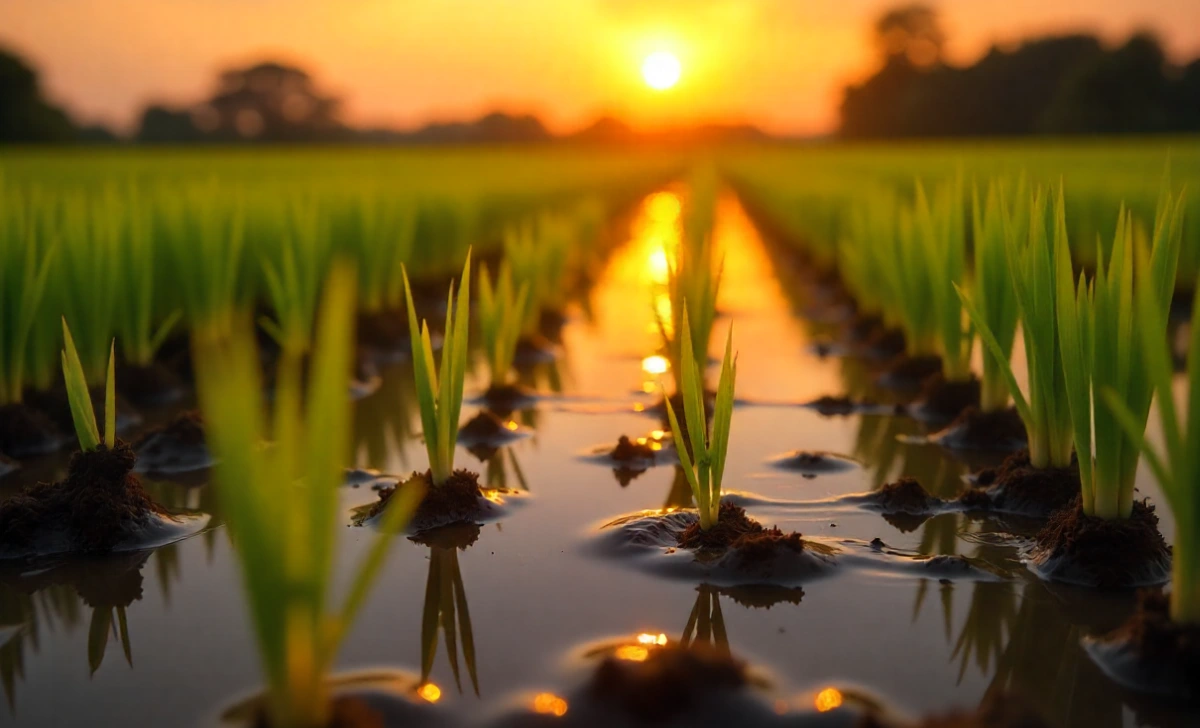
2. Underwatering and Drought Stress
The Problem: While overwatering gets more attention, underwatering also ranks high among indoor causes of yellow leaves. Plants experiencing drought stress cannot transport nutrients effectively, causing older leaves to yellow and drop.
How to Identify: Leaves feel crispy and dry before turning yellow. The soil pulls away from the pot edges, and the plant may appear wilted. Yellowing often affects the entire plant rather than just the bottom leaves.
The Simple Fix:
- Gradually increase watering frequency
- Water thoroughly until excess drains from the bottom
- Consider bottom-watering for severely dehydrated plants
- Establish a consistent watering schedule based on your plant’s needs
- Use a moisture metre for accurate readings
Helpful Tip: Create a watering calendar on your phone with plant-specific reminders. Different plants have varying water requirements even in the same home environment.
3. Inadequate Lighting Conditions
The Problem: Poor lighting disrupts photosynthesis, making it one of the most overlooked causes of yellow leaves. Many Australian homes have limited natural light, especially during the winter months.
How to Identify: Lower leaves turn yellow while new growth appears pale or stretched. Plants may lean toward light sources, and overall growth slows significantly.
The Simple Fix:
- Move plants closer to bright, indirect light sources
- Rotate plants weekly to ensure even light exposure
- Consider LED grow lights for dark corners
- Choose appropriate plant varieties for your lighting conditions
- Clean windows regularly to maximise natural light penetration
Personal Experience: Melbourne resident James noticed his fiddle leaf fig’s bottom leaves yellowing every winter. Moving it 50cm closer to his living room window solved the problem completely.
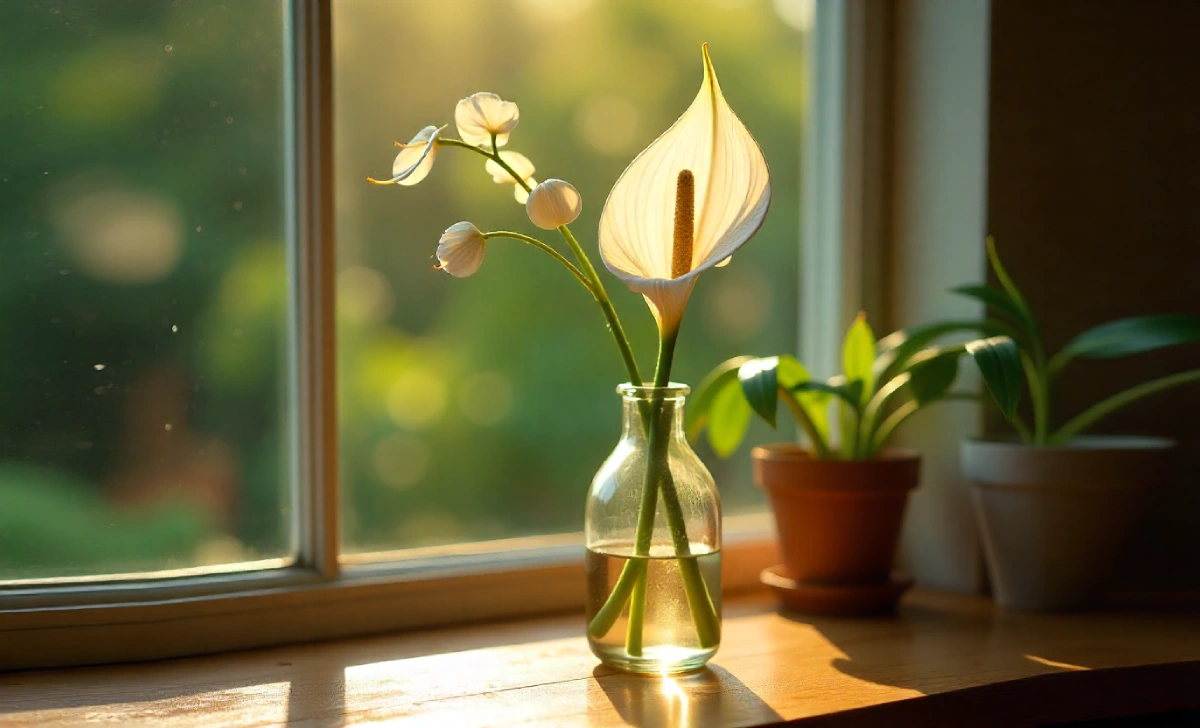
4. Nutrient Deficiencies and Feeding Problems
The Problem: Container plants eventually exhaust soil nutrients, creating another common entry in indoor plants yellow leaves causes. Nitrogen deficiency commonly causes yellowing, starting with older leaves.
How to Identify: Yellowing begins with lower, older leaves and progresses upward. New growth may appear smaller or paler than usual. Plants in the same pot for over a year are particularly susceptible.
The Simple Fix:
- Apply balanced liquid fertiliser every 2-4 weeks during the growing season
- Reduce feeding to a month during the winter months
- Choose fertilisers specifically formulated for indoor plants
- Follow package instructions—more isn’t always better
- Consider slow-release fertiliser pellets for consistent feeding
Expert Tip: Look for fertilisers with an N-P-K ratio of 10-10-10 or 20-20-20 for most indoor plants. These balanced formulas prevent nutrient imbalances that can worsen yellowing issues.
5. Temperature Fluctuations and Environmental Stress
The Problem: Indoor plants prefer stable temperatures between 18-24°C. Sudden temperature changes rank among the significant causes of yellow leaves, especially during Australian seasonal transitions.
How to Identify: Yellowing occurs after moving plants or seasonal changes. Leaves near windows, heaters, or air conditioning units are most affected.
The Simple Fix:
- Position plants away from heating and cooling vents
- Avoid placing plants near frequently opened doors or windows
- Use curtains or blinds to moderate temperature fluctuations
- Monitor indoor temperatures with a thermometer
- Group plants together to create stable microclimates
Seasonal Advice: During summer, Perth and Adelaide residents should watch for heat stress near west-facing windows. Consider sheer curtains to filter the intense afternoon sun.
6. Pest Infestations and Plant Health Issues
The Problem: Common indoor pests like spider mites, aphids, and scale insects damage plant tissues, making pest problems another key factor in plants yellow leaves. These tiny invaders are often overlooked until damage becomes severe.
How to Identify: Look for tiny insects, webbing, or sticky residue on leaves. Yellowing may appear patchy or concentrated in specific areas. You might notice tiny holes or stippling on leaf surfaces.
The Simple Fix:
- Inspect plants weekly for early pest detection
- Isolate affected plants immediately to prevent spread
- Treat with insecticidal soap or neem oil solutions
- Increase humidity to deter spider mites
- Remove heavily infested leaves and dispose of them properly
Prevention Strategy: Wipe leaves monthly with a damp cloth. This simple practice removes dust, improves photosynthesis, and helps you spot pest problems early.
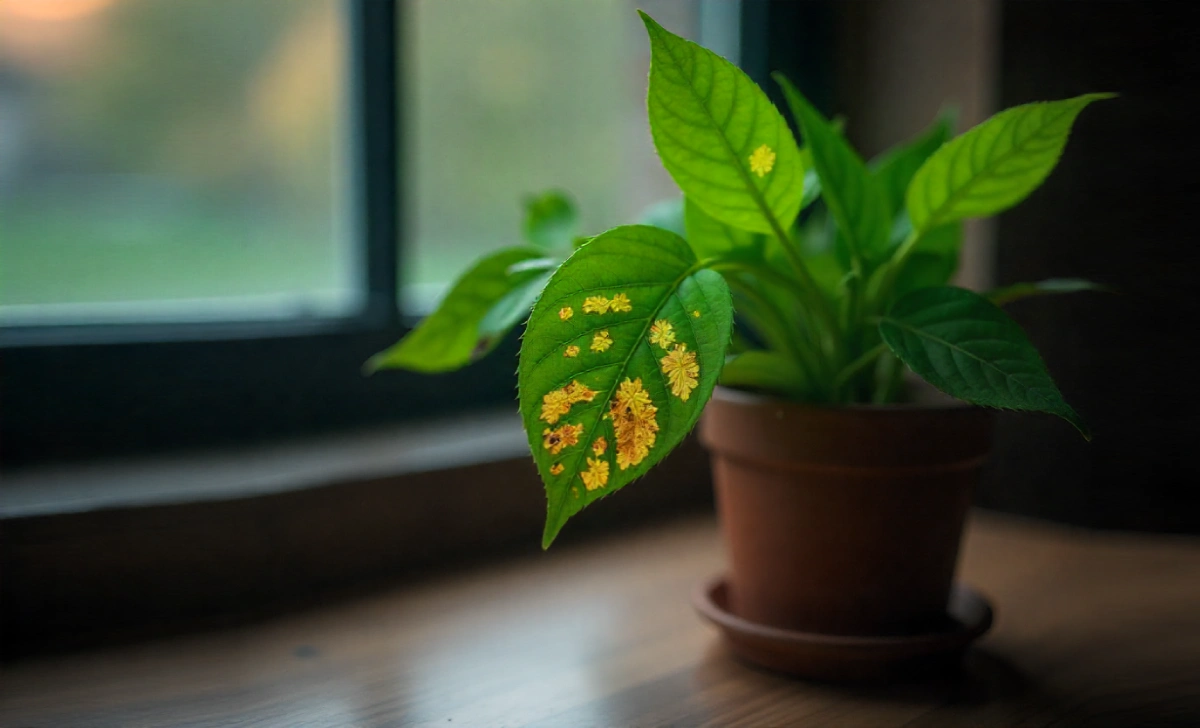
7. Natural Ageing and Seasonal Changes
The Problem: Not all entries in indoor plants’ yellow leaves indicate problems. Plants naturally shed older leaves as part of their growth cycle, particularly during seasonal transitions.
How to Identify: Only the oldest, lowest leaves turn yellow and drop. New growth appears healthy and vigorous. Yellowing occurs gradually over several weeks.
The Simple Fix:
- Simply remove yellow leaves with clean scissors
- Continue regular care routine
- Expect increased leaf drop during autumn and winter
- Focus on maintaining optimal growing conditions
- Don’t panic if only a few older leaves are affected
Reassurance: It’s completely normal for plants to drop 1-3 older leaves monthly. This natural process allows plants to redirect energy toward new growth.
Prevention Strategies for Healthy Indoor Plants
Establishing Proper Care Routines
Creating consistent care routines prevents most entries in indoor plants yellow leaves before they start. Check your plants every few days, observing changes in leaf colour, soil moisture, and overall appearance.
Maintain a plant care journal, noting watering dates, fertilising schedule, and any observed changes. This record helps identify patterns and adjust care accordingly.
Creating Optimal Growing Environments
Lighting Management: Position plants according to their specific light requirements. South-facing windows provide the brightest light, while north-facing windows offer gentler illumination suitable for low-light plants.
Humidity Control: Most indoor plants prefer humidity levels between 40-60%. Use humidity trays, group plants together, or run a humidifier during dry periods.
Air Circulation: Ensure gentle air movement around plants without creating drafts. This prevents stagnant air that encourages pest problems and fungal issues.
Choosing the Right Plants for Australian Conditions
Consider your local climate when selecting indoor plants. Brisbane’s humid subtropical climate suits different plants than Perth’s Mediterranean climate. Choose varieties that adapt well to your specific environmental conditions.
Popular Australian indoor plants like peace lilies, snake plants, and pothos are generally more forgiving and less prone to the common indoor plant yellow leaves cause.
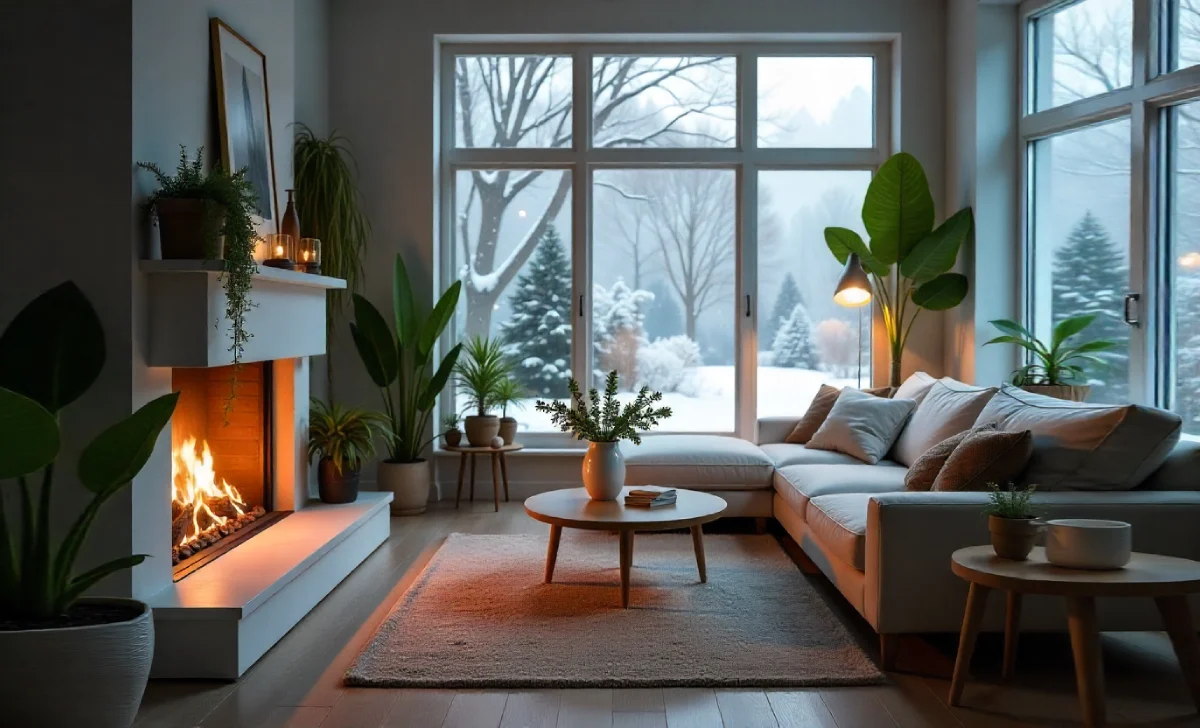
When to Seek Professional Help
Contact local nurseries or plant specialists if yellowing persists despite addressing the common causes of yellow leaves. Some issues, like severe root rot or systemic plant diseases, may require professional intervention.
Consider consulting with horticultural experts if you’re managing valuable or irreplaceable plants. Many Australian garden centres offer plant health consultations and diagnostic services.
Quick Reference Guide: Diagnosing Indoor Plants Yellow Leaves Causes
Bottom leaves yellowing first: Usually overwatering or natural ageing
All leaves are yellowing: Typically, underwatering or severe light deficiency
Patchy yellowing: Often pest damage or nutrient deficiency
Yellowing after moving: Environmental stress or temperature shock
Yellowing with brown tips: Usually underwatering or low humidity
Yellowing with soft texture: Overwatering or root rot
Conclusion
Understanding indoor plants with yellow leaves empowers you to become a more successful plant parent. Most yellowing issues stem from watering problems, inadequate lighting, or environmental stress—all easily correctable with proper knowledge and consistent care.
Remember that plant care is a learning process. Every yellow leaf teaches you something about your plant’s needs and preferences. By addressing these common indoor plants’ yellow leaves systematically, you’ll develop the skills to maintain thriving indoor gardens.
Ready to transform your yellowing plants back to vibrant green? Start by identifying which of these indoor plants with yellow leaves applies to your situation, then implement the corresponding solution. Your indoor garden will reward you with lush, healthy foliage that brightens your Australian home year-round.
Have you successfully identified and treated any of these indoor plants yellow leaves in your own indoor plants? Share your experiences and tips in the comments below—your insights could help fellow plant enthusiasts across Australia!
